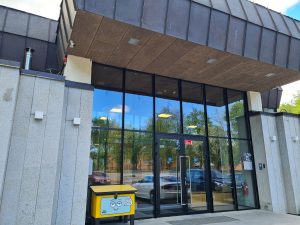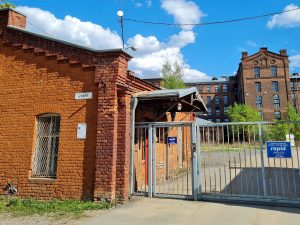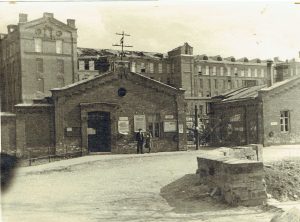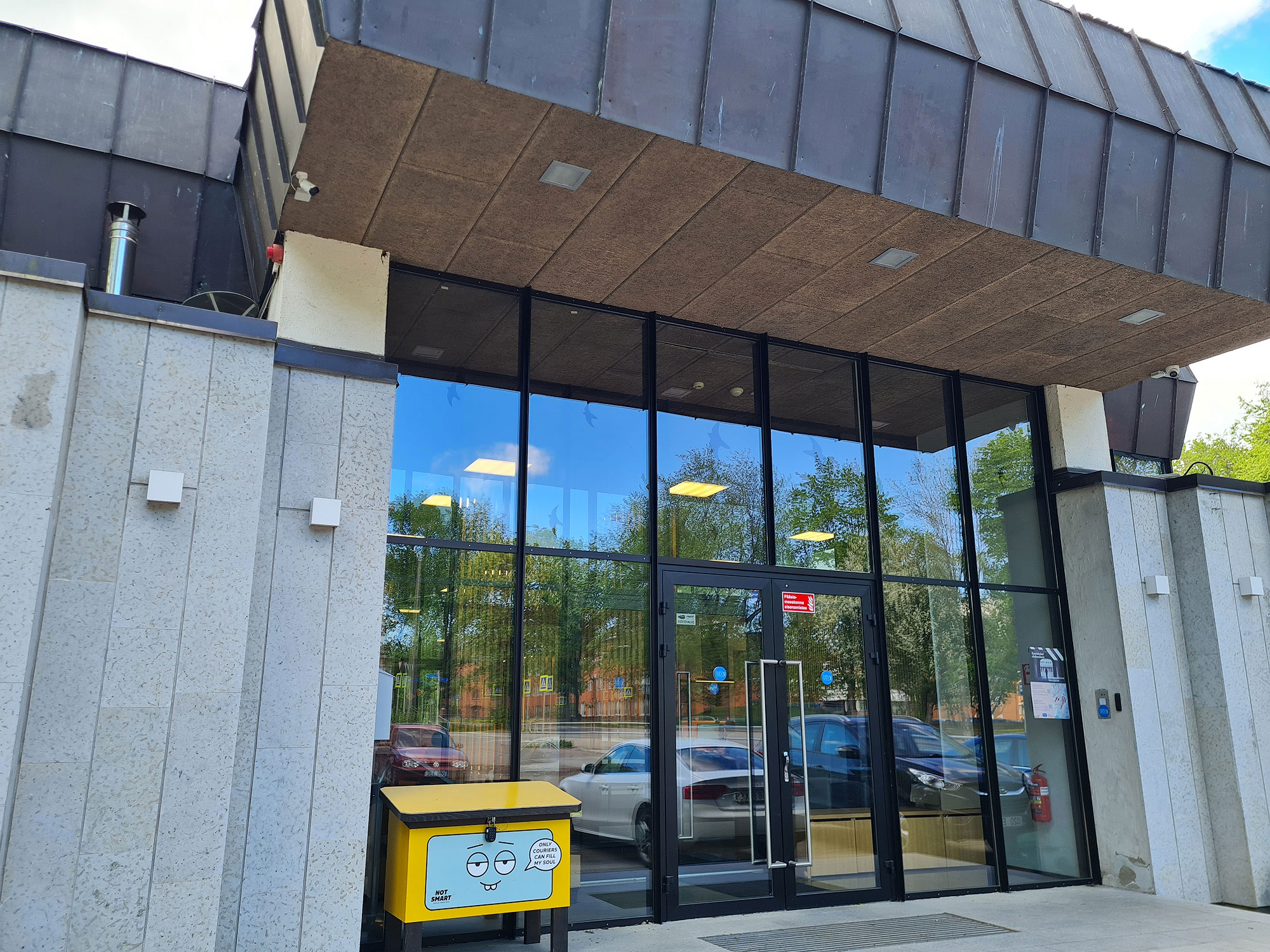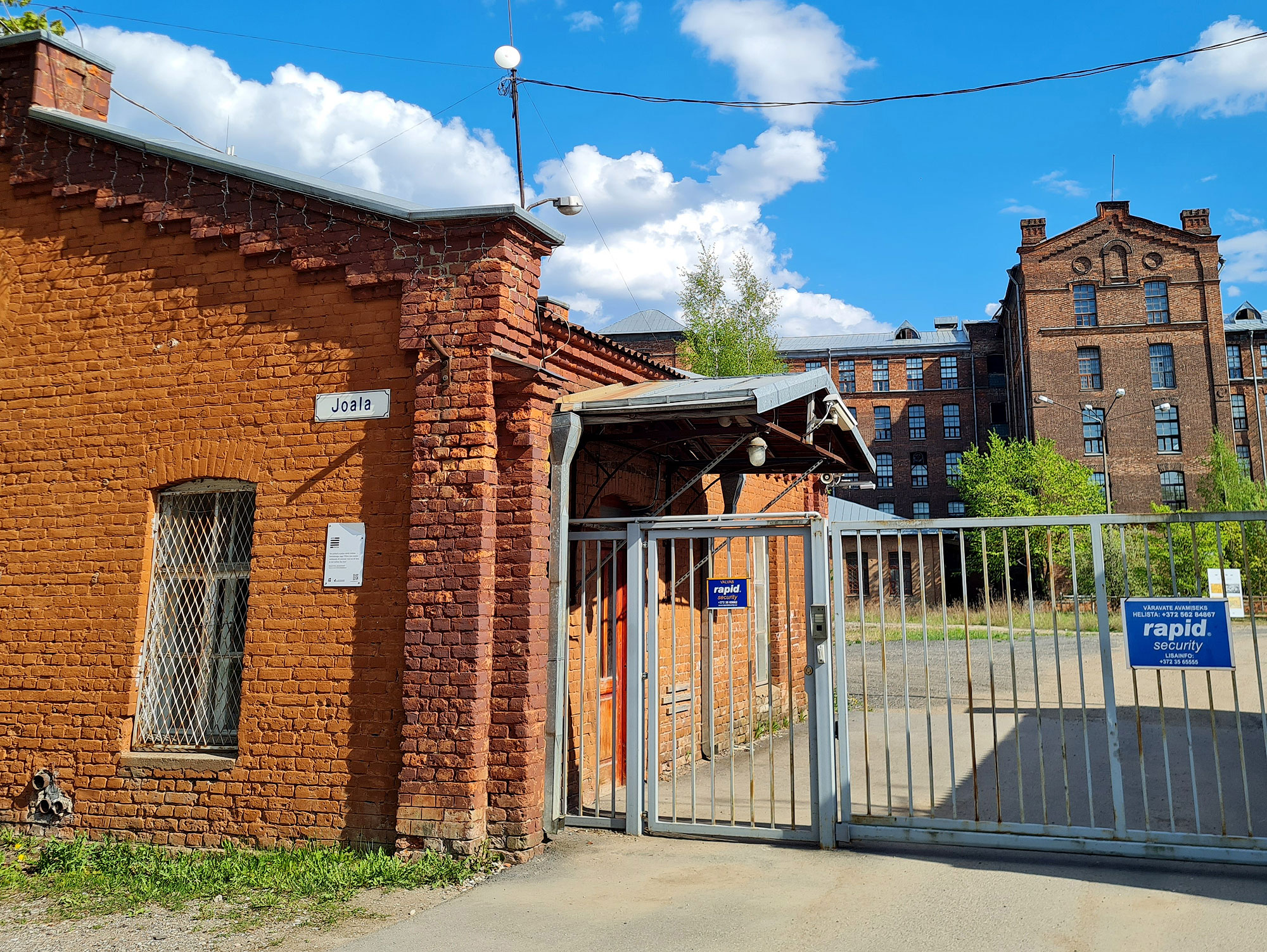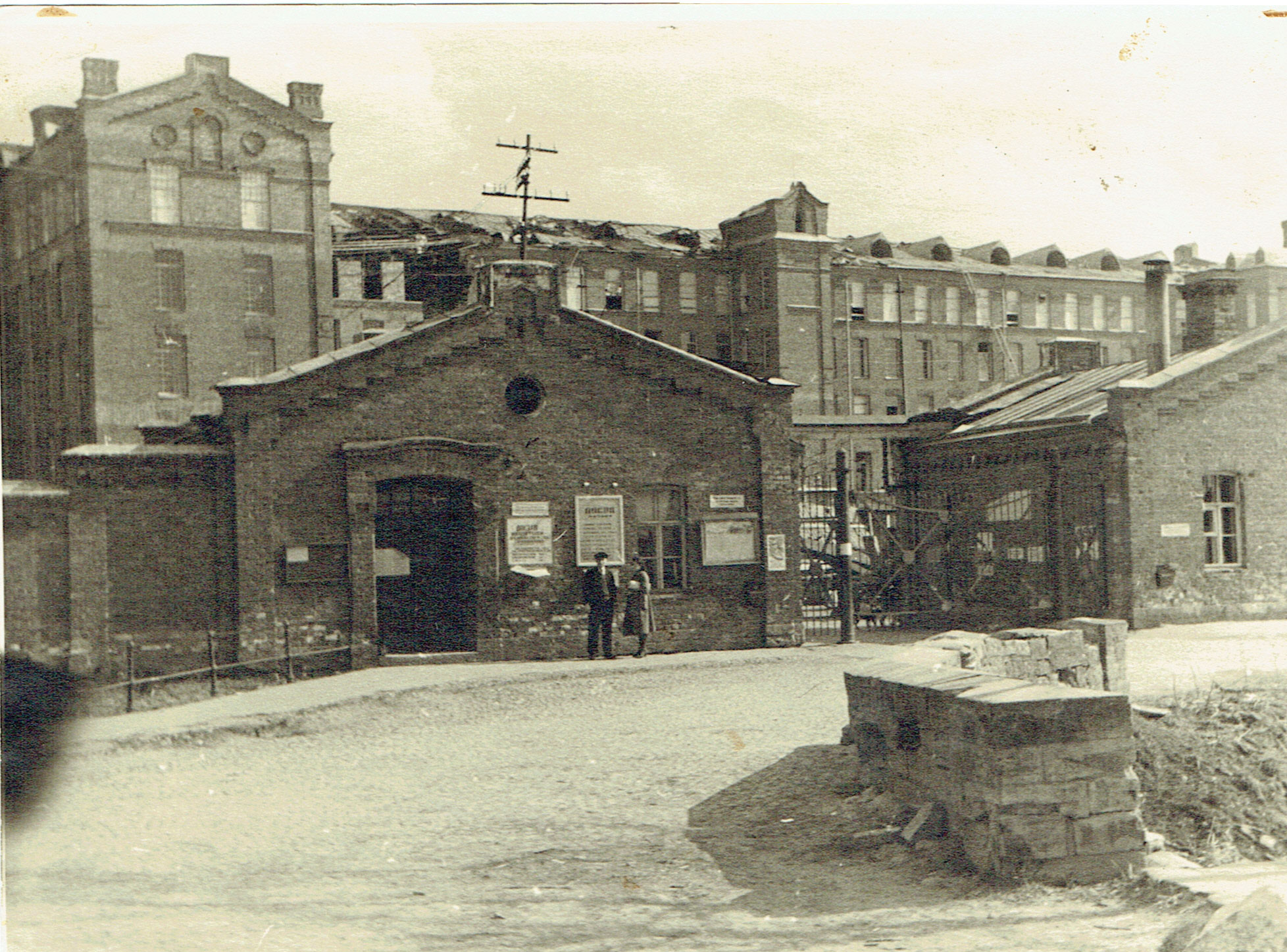The golden years of Kreenholm and all of Narva during the Soviet period are the 1980s. If in 1980, nearly 80,000 people lived in Narva, then in 1981, 81,000, in 1982, 82,000, and so the population continued growing until 1985. At that time, several thousand people worked in Kreenholm, the same number as before the First World War. In the 1980s, every 15th meter of fabric in the Soviet Union was produced in Narva.
The entrance building was constructed in 1983. The building has a gorgeous, massive roof and walls tiled with dolomite. The glass walls of the building looked unusually large for a building at that time. Today, it functions as an office building.
Through the main entrance, you could go directly to the bridge which led to Kreenholm island. The manufacture got its name after the island it was founded on. The island divides the Narva River into two. The 12-hectare, 750-meter-long and 200-meter-wide piece of land got its current name in the second half of the 18th century, when it was purchased by Narva merchant Carl Joachim Sutthoff. The historical name of Kreenholm Island is considered to be Kråkenholm in Swedish or Krähenholm or Crow Island in German. Kreenholm is also associated with the similar-sounding word grün in German, which means green, and therefore Kreenholm, or Green Island, became the name of the island.
Sutthoff’s summer house was visited by Empress Catherine II in May 1780. In the second half of the 18th century, summer residences of wealthy citizens were located in Kreenholm. At the same time, the largest sawmills in Russia were located here, a water flour mill was set up on the river, and a tannery was working there too. This was 75 years before the founding of the Krenholm manufactory.
“At 11 o’clock in the morning, Ekaterina Alekseyevna, accompanied by her staff and city representatives, set off towards the “Narva rapids”, or waterfall. Here, the empress wished to eat a lunch arranged by the city in the house of Carl Sutthoff, a resident of Kreenholm island. When she entered the house, the children laid flowers at her feet and salutes were heard from the batteries placed nearby. For the luncheon 34 sets of dishes had been prepared by the ladies of the town, and they also served the empress at the table. A men’s table was set up downstairs. During the lunch, ” music was played by the Narva regiment and the city with timpani and pipes.” During lunch, numerous toasts in honor of the queen were proposed. They were accompanied by the sound of trumpets and cannon shots. Then the children who had scattered flowers on the path of the queen were invited to the table and received sweets from Her Majesty. Empress Catherine playfully described her stay at Sutthoff’s house near the Narva waterfall for lunch, without showing mercy to the self-satisfied Narva matrons and maids who served her. “I had lunch at the falls,” she wrote, “the flow of which is much swifter than my stay here; the reason for this is the spring flood… I was quite tired from yesterday and today: I was showered with attention of the beauties of the town, and their courtesy even went so far as to serve me at table, headed by the doctor’s wife. I was scared to death of her cleaning my plates with rhubarb the way as they rubbed them with garlic. By the way, the beauties here are terribly hideous, yellow like quinces and thin like old mares…”
